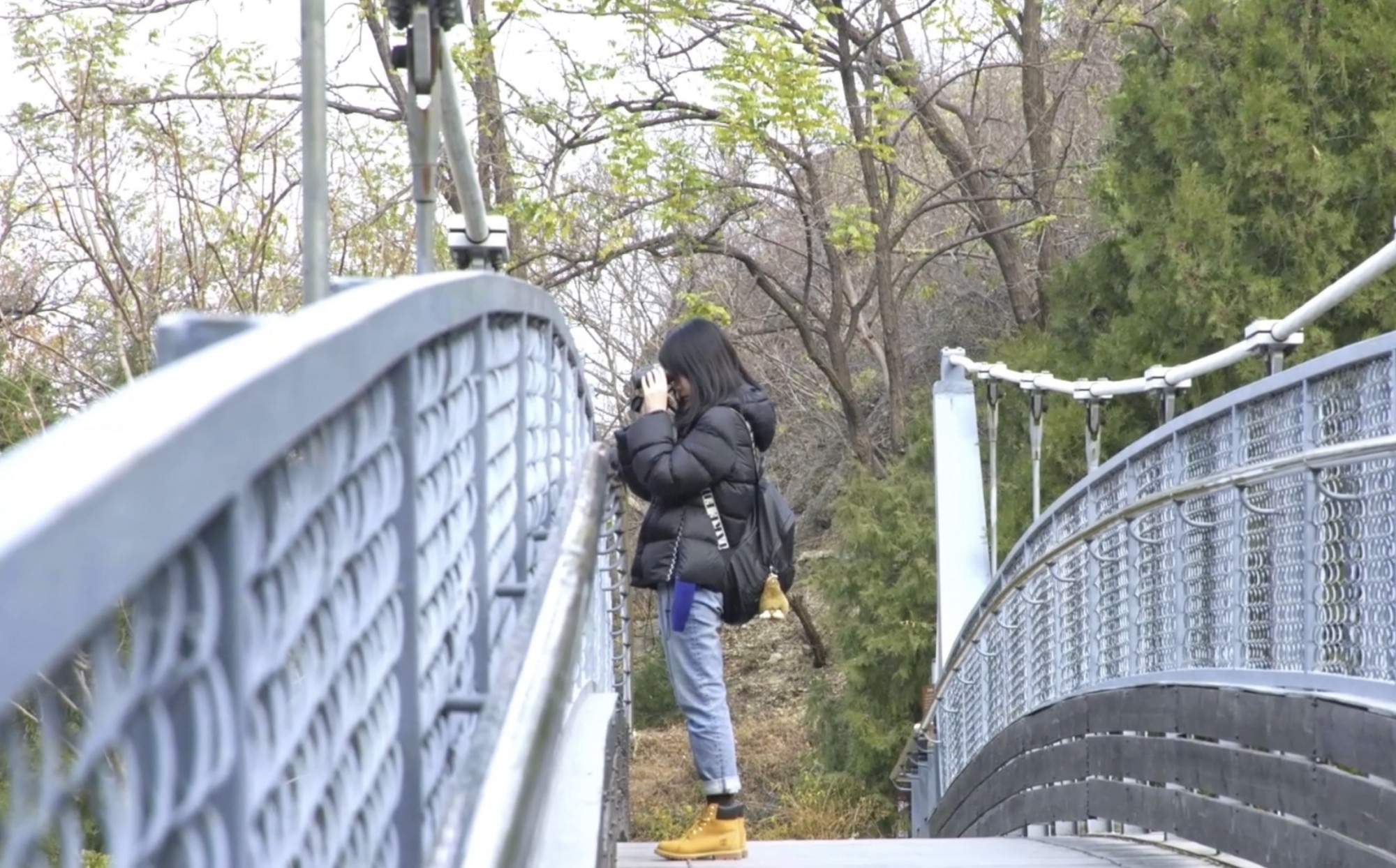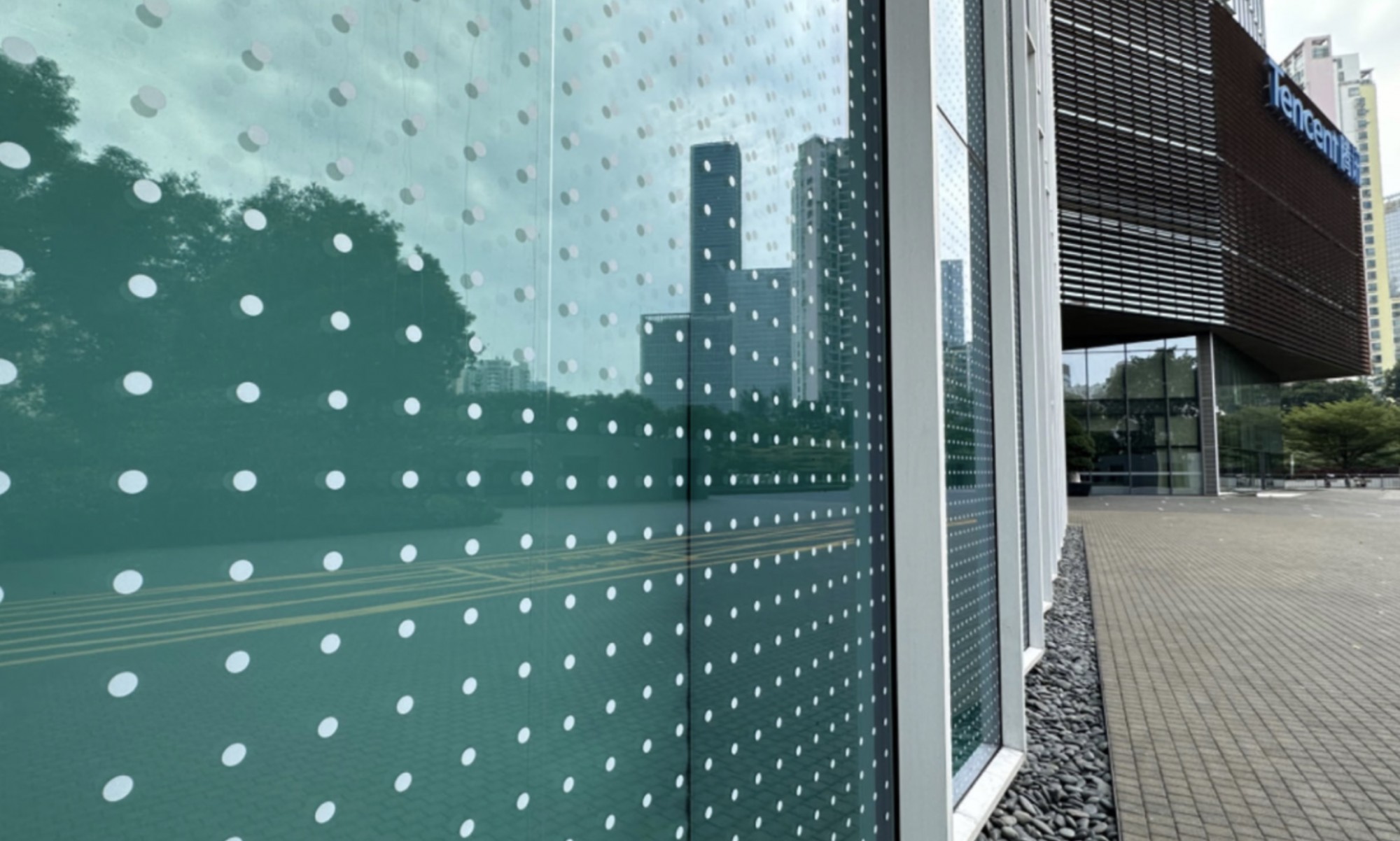How an Afternoon Walk Kickstarted a Movement to Save Birds from Deadly Building Collisions
“No one will protect what they don’t care about; and no one will care about what they have never experienced.” David Attenborough
One autumn afternoon, a Tencent employee was walking around the Beijing headquarters when the sight of a dead bird stopped him in his tracks. It was a sparrowhawk – a protected bird of prey – and it had collided with the building’s mirrored glass. Although tragic, it is an all-too-common occurrence, with over one billion birds estimated to die each year worldwide due to collisions with glass windows.
The employee, Luke He, saw the fallen bird in 2022, and knew he needed to take action. He, who is part of the Tencent News team and a Tencent volunteer, had been working with the Sustainable Social Value (SSV) unit on how to raise awareness about the importance of biodiversity protection. Perhaps there was something he could do.
“The incident really affected me and that was when I realized this wasn’t a problem happening in some faraway place, it was occurring right in front of us. Although there was awareness of the problem, collisions were still happening, and I wondered if we could do more.”
Asking the right questions
He and a former colleague began researching the issue of bird collisions and discovered that it was a global challenge. They also learned that solutions like patterned glass and better lighting were already available.
But while awareness was increasing, they were missing data – enough verified, place-specific data to drive change. They asked: “Could the public help collect that data?” and “Could more people be equipped to turn concern into contribution?”
Turning a problem into participation
That’s when He joined forces with colleagues to initiate a citizen science project. With some assistance from the Tencent Volunteer Association, He and his colleagues were able to quickly recruit and train a group of volunteers to help.
The first step was to conduct a bird collision prevention survey, which happened in the spring of 2023. “We weren’t sure how many people we could recruit, but the response was surprisingly strong,” He says. Fifty-two Tencent volunteers from across the country in Beijing, Shanghai, Shenzhen, and Chengdu signed up to patrol company buildings and record anytime a bird collided with the glass windows.
 A Tencent volunteer observes bird activity as part of data collection to prevent bird collisions.
A Tencent volunteer observes bird activity as part of data collection to prevent bird collisions.
After setting up patrol routes, volunteers spent about a month closely watching for bird collisions, reporting each case into a special Mini Program on Weixin.
Volunteers observed more than 10 cases during the survey period, with more than half happening at our Shenzhen offices. “It’s an empowering cycle, where data leads to action, and action leads to more data,” He said.
From evidence to action: a broader ecosystem comes together
With research in tow, He and the other volunteers began approaching local partners for help. A thin film with dots on it – which obscures the reflection – was identified as a solution, and was quickly applied to part of the Binhai building in Shenzhen. The film features a grid of dots spaced 5cm by 5cm apart, which can break up the glass's mirror effect, helping birds see and avoid the windows.
 Dotted film is applied to the windows of Tencent’s Binhai building in Shenzhen to help prevent bird collisions.
Dotted film is applied to the windows of Tencent’s Binhai building in Shenzhen to help prevent bird collisions.
It was clear that the solution was starting to work. Post-installation monitoring showed bird collision rates at Binhai Building dropped significantly after the dotted film was applied.
Even more volunteers were inspired to join the project and save the lives of birds in the fall of 2023. It expanded to places like Beijing’s Olympic Forest Park, where the presence of large bird populations could mean more collisions. Thanks to their efforts, the façade of the office building adjacent to the park is being retrofitted with the dotted film, with plans to apply the film at other sites as well.
The effort to prevent birds from colliding with buildings started small, but was built on Tencent’s values and broader efforts to preserve biodiversity. One example is a Mini Program for Weixin called Wildlife Friends, which enables people to snap a photo of a bird and have the species identified with the help of artificial intelligence. Bird watchers can also use it to log observations, monitor migration patterns, and yes, even report bird strikes. People have contributed more than 150,000 observations as of the end of March 2025.
Small steps, big trends
When you see a bird, especially in a city, it’s a sign of healthy urban biodiversity – so it’s important that we protect them. Like Luke He, people in other parts of the world are also finding solutions to keep birds safe. For example, in Toronto, Canada, laws now require new buildings to incorporate bird safety into their designs. In London, councils are designing pollinator pathways to support butterflies; in Melbourne, Australia, community apps help monitor koala habitats.
Protecting biodiversity isn’t just about distant rainforests, it’s about our own neighborhoods, cities, and the natural beauty that lives just outside our windows.
What began as a quiet walk after lunch became a small but important movement. While we can’t prevent all bird collisions, He is inspired that Tencent employees are more aware of collisions, how to respond to them, and ultimately how to reduce their frequency. That fills him with hope. Because small steps, taken together, can shift what’s possible—for birds, and for biodiversity everywhere.


